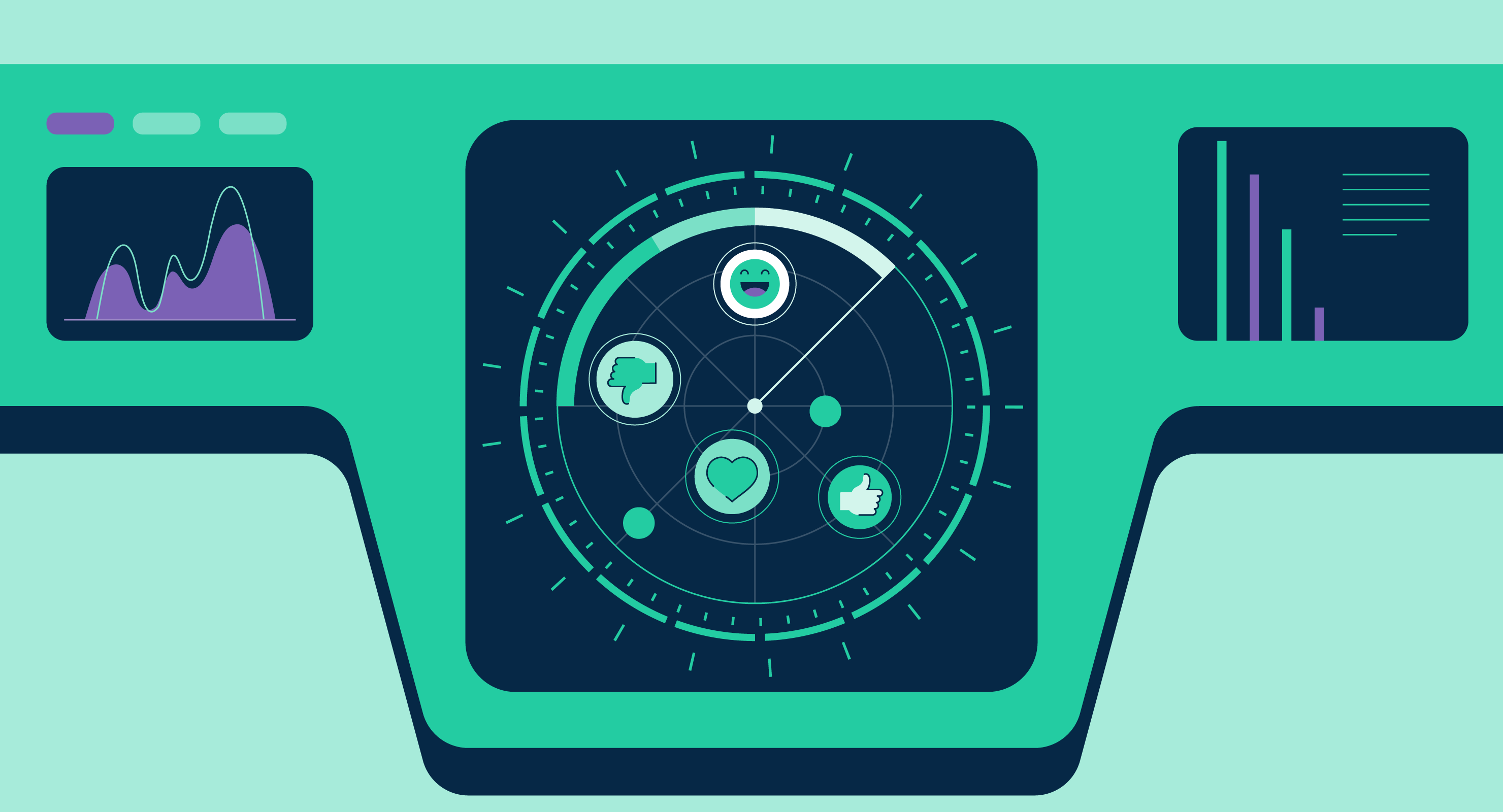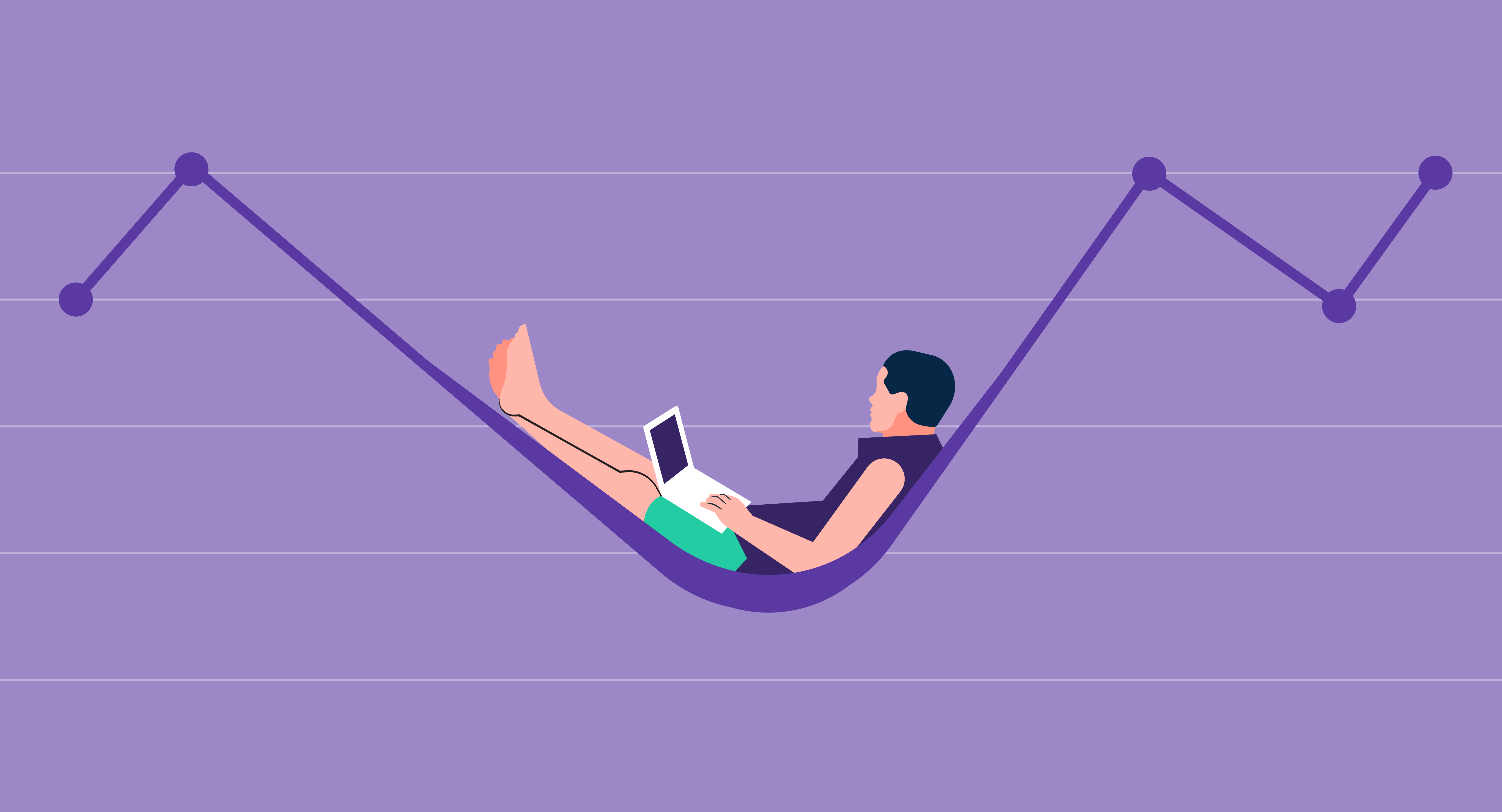

People talk, and it’s time to start paying attention.
If you aren’t monitoring your brand mentions, you’ll want to get started right away. Brand monitoring allows you to do market research and make sure your brand stays relevant and popular with its target audience.
People will tell you what they like, don’t like, and compare you to your competitors – all of which is valuable information that will help shape your marketing strategy.
Brand monitoring is the process of tracking your brand’s mentions across different channels to discover how your brand is perceived. You’ll collect information, analyze it, and implement what you’ve learned from monitoring your mentions.
There’s a duality to brand monitoring that includes being proactive and reactive. Proactivity means listening and use what you discover to influence future decisions. For example, if you notice your consumers shifting to Tik Tok to discuss your brand, deciding to create a profile and produce content on the platform is proactive. Reactivity is acting in the current moment to respond and engage with your audience and those who mention you. Replying to both positive and negative tweets on Twitter about your brand is an example of being reactive. By doing both, brand monitoring allows you to listen to and learn from your audience while playing an active role in shaping your brand’s perception.
Brand monitoring requires a holistic approach. Look at the good, the bad, and the ugly. Don’t just pay attention to the positive mentions. Negative mentions may prove to be the most helpful in showing you where your brand can improve.
Marketers must understand how brand monitoring works to reap all of the benefits. Brand monitoring starts with knowing where to look, deciding what to look for, and using tools to achieve your goals to implement what you learn into your marketing strategy.
Brand mentions can happen anywhere. Channels to look out for are:
Online brand monitoring, such as on social media or online sources, is much simpler to do since there’s software available. Monitoring print media would require an employee’s manual attention and may not be worth the extra labor depending on your scope. Today, many print media sources also have online sources where duplicate or very similar information is published. Odds are, if you’re mentioned in print media, you’re probably mentioned in their online space as well.
The intention of your brand monitoring is also relevant when deciding where to look.
The internet will likely hold all of the answers you’re looking for when it comes to monitoring your brand mentions; it’s only a matter of deciding what you’re looking for.
There are several different metrics that you can track depending on your marketing goals. Clarifying how you want brand monitoring to serve your business will ultimately help you decide what to look at.
Some standard metrics to track are:
Metrics will help you maintain your brand, plan ahead, and pivot when necessary. Choose metrics that will allow you to benefit the most from brand monitoring and achieve your goals.
Brand monitoring tools can be a significant timesaver when it comes to tracking mentions online, but you must choose a tool that suits your needs. Media monitoring software will allow you to monitor your brand online and is designed to enable you to take action with the information you learn.
Common capabilities include:
When looking for the best media monitoring software for your brand, it’s essential to understand what’s on the market. Reviews and software descriptions are a great place to start. Read about various software to find the one that will work best for the size of your business, your pricing budget, and the metrics you want to track.
Tip: Decide if you want general media monitoring software or social media monitoring software. If you plan only to track your brand on social media, go with the latter; however, if you want to track your brand across different channels, media monitoring software would be best.
Before deciding on a brand monitoring software, you can also see if the software has a trial or demo available so that you can see if it will work for you.
Once you’ve decided on brand monitoring software, you’ll efficiently track metrics and start using the data to improve your marketing strategy.
Once you have brand monitoring software and have a collection of data, start analyzing your findings so that you can use the information to plan for success. Decipher the meaning behind the metrics you chose by looking into what it means for your brand. Marketers should ask themselves:
Data is collected for a reason. Use your brand monitoring information to plan your next marketing campaign, pivot in any way necessary, and ensure that your brand is growing in success.
Brand monitoring today can keep the business consultants away.
Brand monitoring will help you actively monitor the health of your brand in the public eye. You’ll understand the good and the bad and integrate this information into your marketing strategy to plan future campaigns and messaging.
Monitoring your brand will allow you to track your mentions and backlinks, ultimately showing you who talks about you and how often they do it.
Tracking mentions will give you an understanding of where the popularity of your brand lies, which will either reinforce your target audience or help you find new demographic segments that may be interested in your brand. Mentions allow you to find out who talks about your brand and in what context. Dive into this information and learn how people interact with your brand through their mentions and how that shapes your brand’s outward perception.
Backlinks are created when one website links to another website. Tracking backlinks is an excellent opportunity to see where people are finding value or importance. People will typically link to your brand if they report on big updates/news or have found value in one of your resources and are citing it or passing it to their audience. Backlinks help generate traffic to your page, so they also point to the audience of your brand.
Tip: If your brand has been mentioned professionally, but does not have a backlink, reach out to the post’s creator and ask them to include a backlink. Link building will benefit your search engine optimization (SEO) strategy.
By monitoring the attention your brand gets, you’ll be able to learn more about your target audience and how people find your brand useful.
The context around your brand mentions or backlinks will also provide insightful data about how people perceive your brand. You’ll find out if your marketing is successfully making people feel the way you want about your brand. If your brand isn’t perceived in the way you intended, you can shift the narrative around your brand using the data you collect from brand monitoring.
Social listening is an important part of understanding how people feel about your brand. It analyzes the data you collect from monitoring your brand and gives meaning to the information in the context of the greater industry. By utilizing social listening tools and elements, you can ensure that you don’t miss an opportunity with a mention of your own brand or competitors.
Pay attention to the sentiment surrounding your brand. Sentiment analysis is done by looking at the context of your brand and deciphers if it is positive, neutral, or negative. This will allow you to actively understand your audience’s view from an external perspective and prevent offensive or unpopular messaging with your consumers.
Tip: Interested in learning more about how sentiment analysis works? Read more about sentiment analysis as a component of a text mining strategy.
Understanding brand reputation is also another benefit of brand monitoring. Look at how people talk about your brand and what keywords they consistently use to describe it. Not only will this be good for reputation management, but you’ll also be able to ensure if your brand personality and voice are accurately portrayed in the market.
Through brand monitoring, you’ll truly understand if your marketing conveys its intended message to your audience.
Brand monitoring also allows you to manage the interactions people have with your brand in real time. This will ensure that social media or content marketing campaigns are performing well and crisis management is handled correctly.
You’ll be able to assess which part of your marketing campaigns performs the best by looking into what people are interacting the most with whether via reply, comment, or repost. This will allow you to plan future marketing campaigns with better precision to ensure they are successful with your consumers.
Crisis management will also be much simpler when you monitor your brand. Since you’ll be tracking your mentions and the sentiment surrounding your brand, you’ll be able to catch the negative comments much quicker and reply in an adequate amount of time. This will improve your online reputation and ensure that consumers have positive and gratifying interactions with your brand online through enhanced customer service.
Brand monitoring also allows you to benchmark and make sure your brand is keeping up with the competition. You can track industry trends to ensure that your marketing strategy and communication are relevant.
You can analyze strategic gaps, understand what works for your competition and fulfill needs where others are falling behind.
Tracking your competition also provides an insight into industry influencers that are promoting them. It'd be a good idea to set up campaigns to sway influencers into promoting your brand instead.
Brand monitoring is a crucial aspect of maintaining an edge over your competitors. It allows you to evolve your marketing plan and meet the needs of your target audience.
Brand monitoring allows you to understand how your brand is perceived by consumers and is a useful tool for marketers. It implements strategies that allow for dynamic strategic planning and active upkeep of the brand reputation. By tracking a variety of metrics, using a media monitoring tool, and implementing findings, brand monitoring can bring great success to your business.
Looking for ways to improve your brand perception? Learn more about making a good impression with these branding statistics.

Want to learn more about brand monitoring software? Explore media monitoring products.
Melanie Maggine is the Content & SEO Intern at G2. She is also a student at the University of Notre Dame studying Marketing and Spanish with a minor in Innovation and Entrepreneurship. Outside of work, Melanie enjoys working on photography! (she/her/hers)

Want to learn more about brand monitoring software? Explore media monitoring products.
Give your brand the upshot it needs to survive.
 by Deirdre O'Donoghue
by Deirdre O'Donoghue
New businesses, especially in the online world, face significant struggles in getting noticed...
 by Amanda Levine
by Amanda Levine
Give your brand the upshot it needs to survive.
 by Deirdre O'Donoghue
by Deirdre O'Donoghue
Never miss a post.
Subscribe to keep your fingers on the tech pulse.




